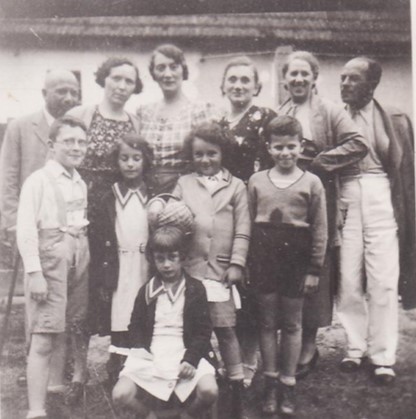In the framework of genealogy research and root research, it is necessary to locate information from foreign sources and analyze it, the process includes the following:
Search for civil records
Civil records contain documentation and details about events in people’s lives. These basically include data on events: birth, death and marriage. Civil records can be found on Jewish genealogy research sites, and on dedicated genealogy sites. The search will be performed according to the desired area in which the people we are looking for were born, married or died. We will perform a digital search on search engines and online genealogy sources that hold information relevant to the period and place where genealogy research is focused.
for more detail about civil records – please refer to the article “Our life Trajectory within the genealogy research” .
Search, locate and collect documents from the Yad Vashem databases
The databases and collections of “Yesh Vashem” contain testimonial pages, lists of synonymous names, lists of names of memorial documents – “Yizkor Books”, photographs and other documents. For a study covering the period of World War II we will look at sources that hold information, documents, testimonies and photos about the period. The Yad Vashem website contains databases of the names of Holocaust victims. The database was built from the first years of the state by testimonies of survivors and expanded over the years by adding various databases of lists and name cards of victims and survivors as well as lists of names of various memorial books. The database also contains testimonies, documents and photographs related to the Holocaust period.

Search sites for tombstones
An important part of root research is locating tombstones and deciphering the writings on tombstones. With the help of various search engines dedicated to searching for gravestones and graves in cemeteries around the world we will locate tombstones and relevant details about the people we are looking for. Search engines for tombstones and tombs each specialize in different areas and in other regions of the world. Searching for roots in any area may require searching for a particular tool and not another. If we find the desired tombstones, we will decipher what is written on them and try to link the data to the genealogical research.
How do we look for information for root research?
There is a large number of available software programs and applications for building family trees. Some also contain search engines dedicated to genealogy research. Some public software also owns certain databases that cannot be linked to other software. These programs offer the user search engines. For example, MyHeritage: On the company’s website you can maintain a family tree and you can also search for names in a wide variety of different databases, including other family trees that are under the maintenance of the company’s website. This “search engine” service is provided by different entities and covers different pieces of information collected under the same entity.
Can historical journalism assist in Genealogy Research?
There are databases that allow searching within historical press. These repositories are also accessible on the Internet (some for a fee) and allow searching within historical press and relevant documents by period and region. This is in accordance with the search for the roots that we perform. These databases have search options such that one can search by keywords and by the types of material or relevant location of the press publication. As part of the genealogy research, we will examine whether the results found in the press are related to the genealogy research.
Search in various Genealogy dedicated digital archives
In addition, we will conduct various searches on sites that contain archival material relevant to genealogy research. In some countries it is possible to search through scanned material of name change, criminal record, personal files, military and more. We will examine whether the search results are related to the genealogical research and attach them to the results of the root research.
Collecting all the findings and formulating the results
In accordance with the research question, which we formulated at the beginning of the genealogy research, and in accordance with the product applicant’s product definition, we will now collect the material we have found until this point during the genealogy research to formulate and bring it to the requested configuration. For example, if we were asked to build a family tree on a genealogy site, we could enter the data collected for that site.






